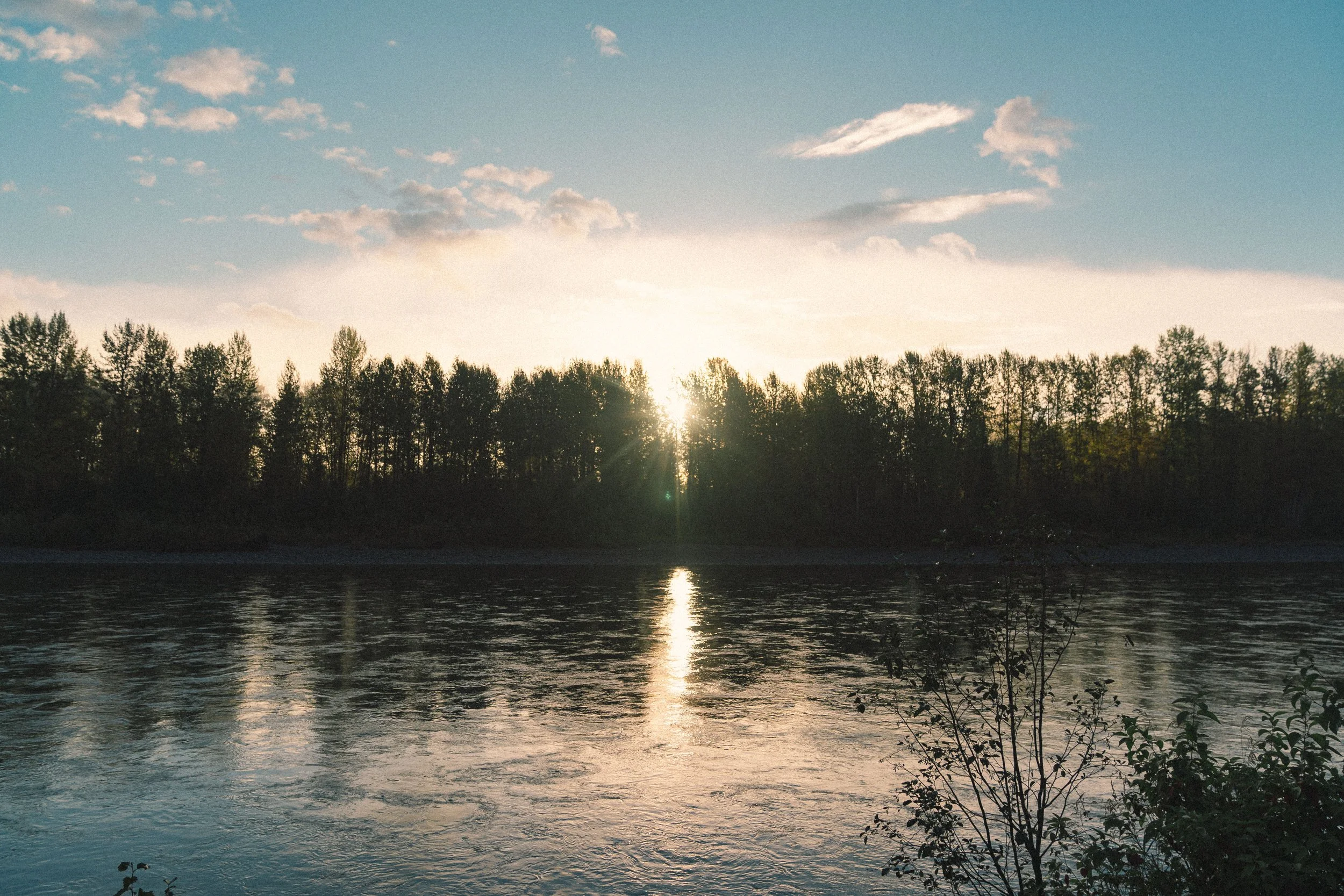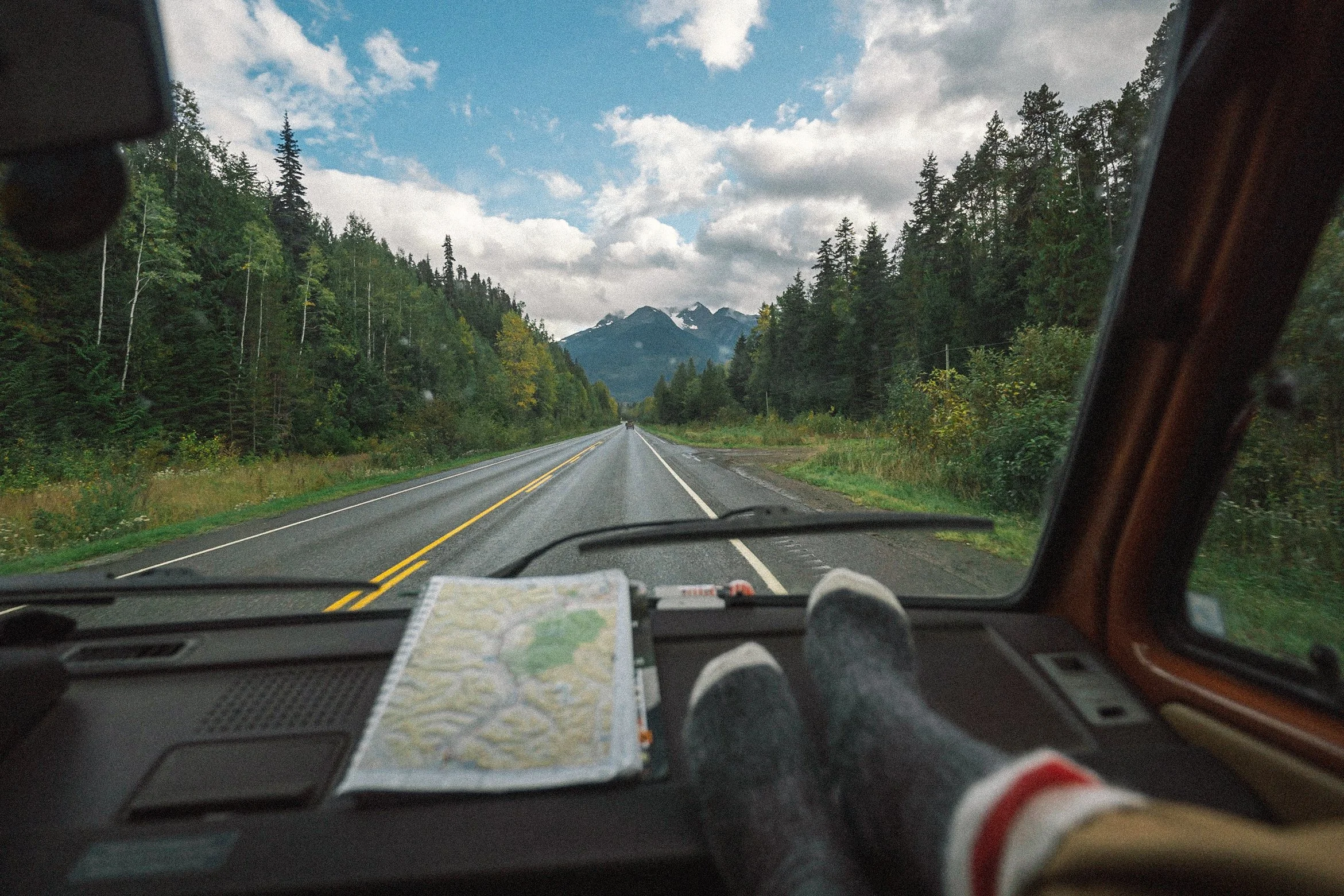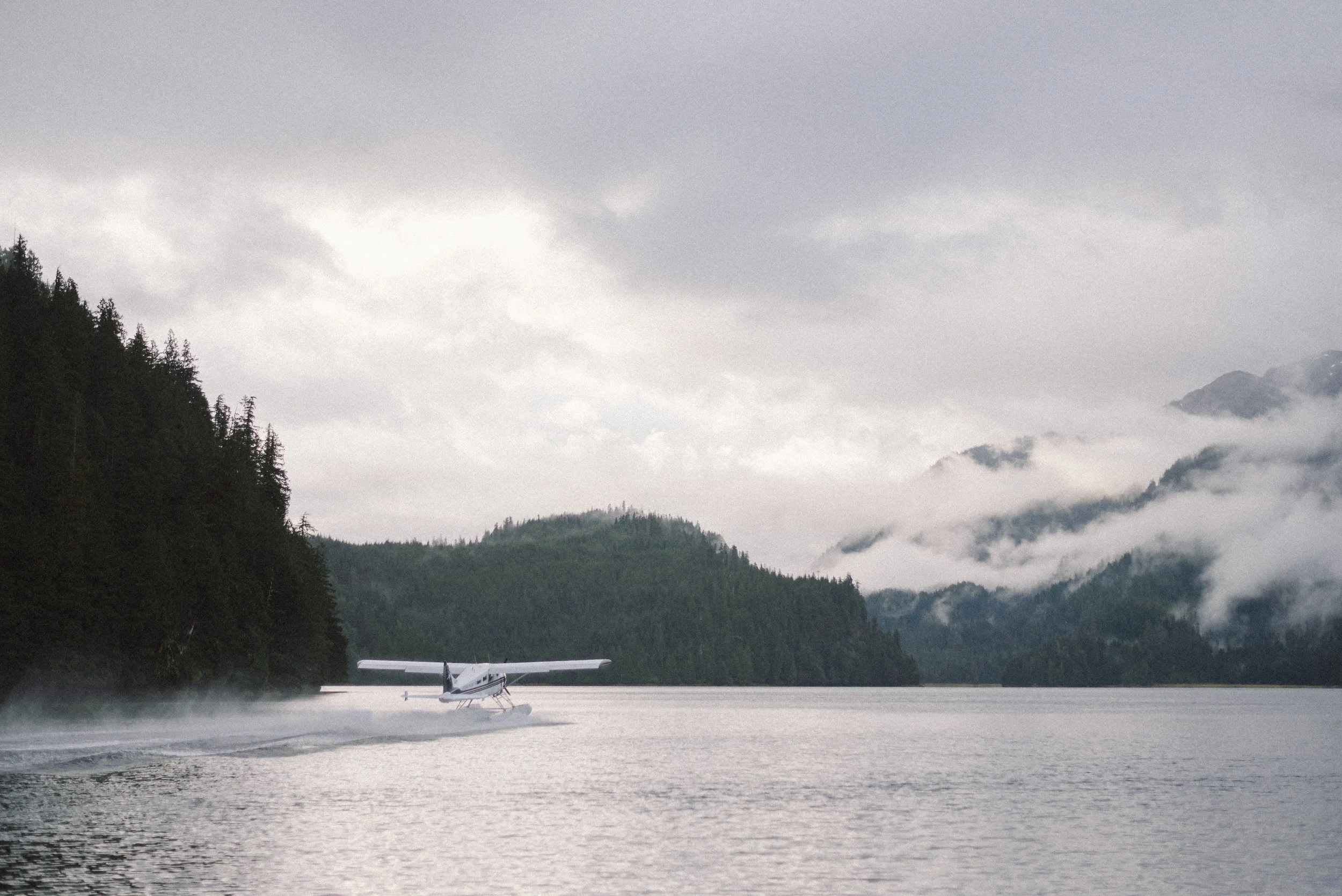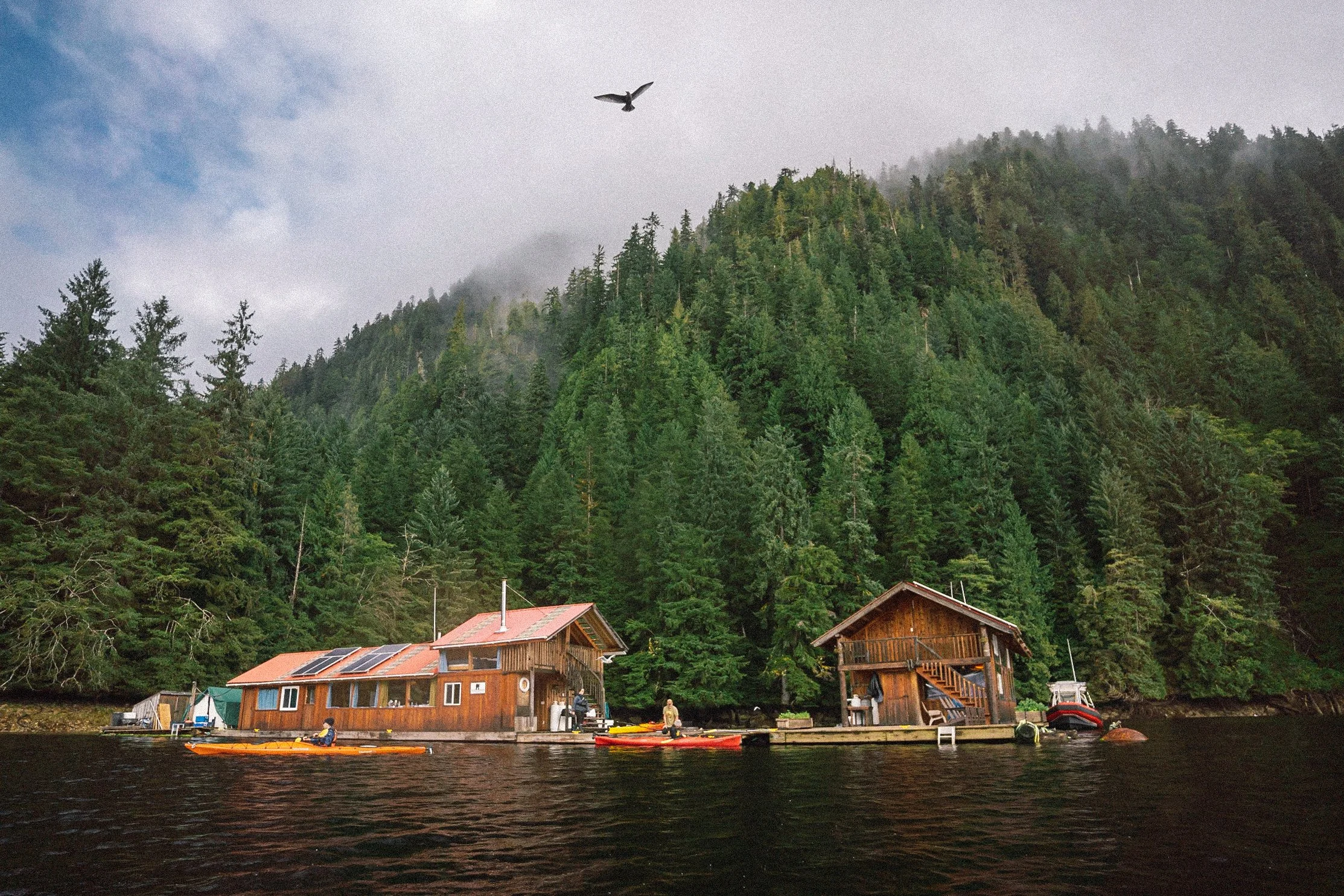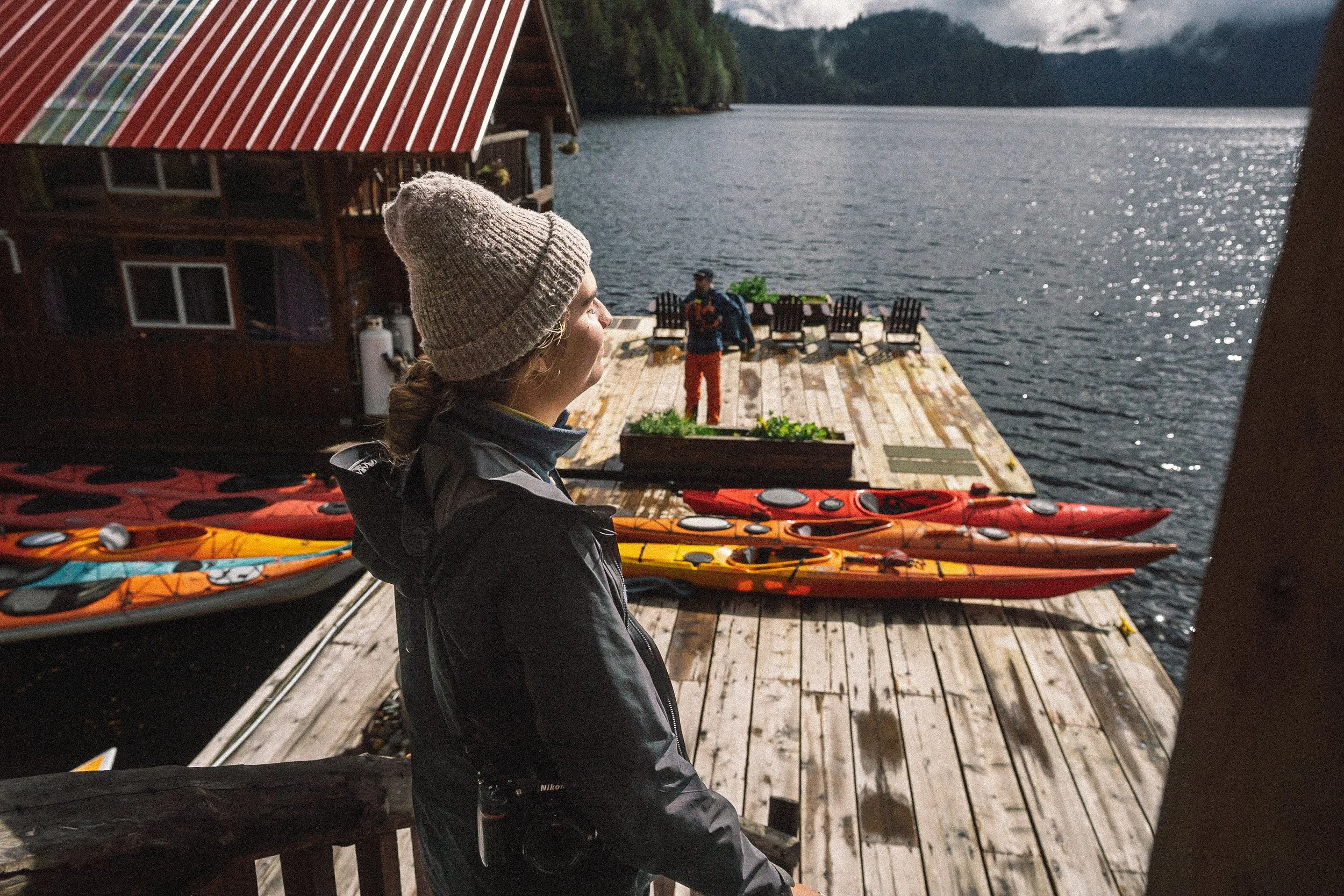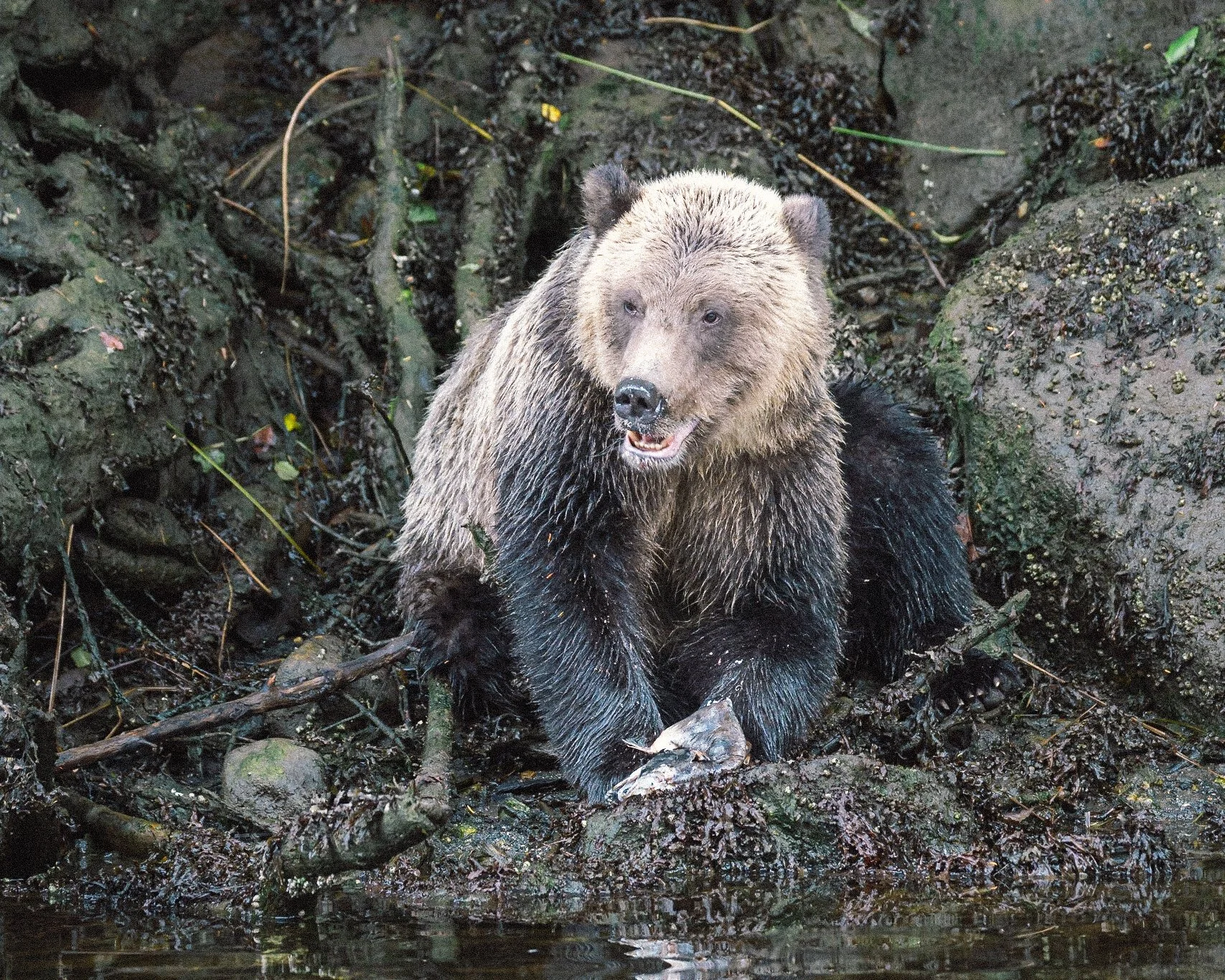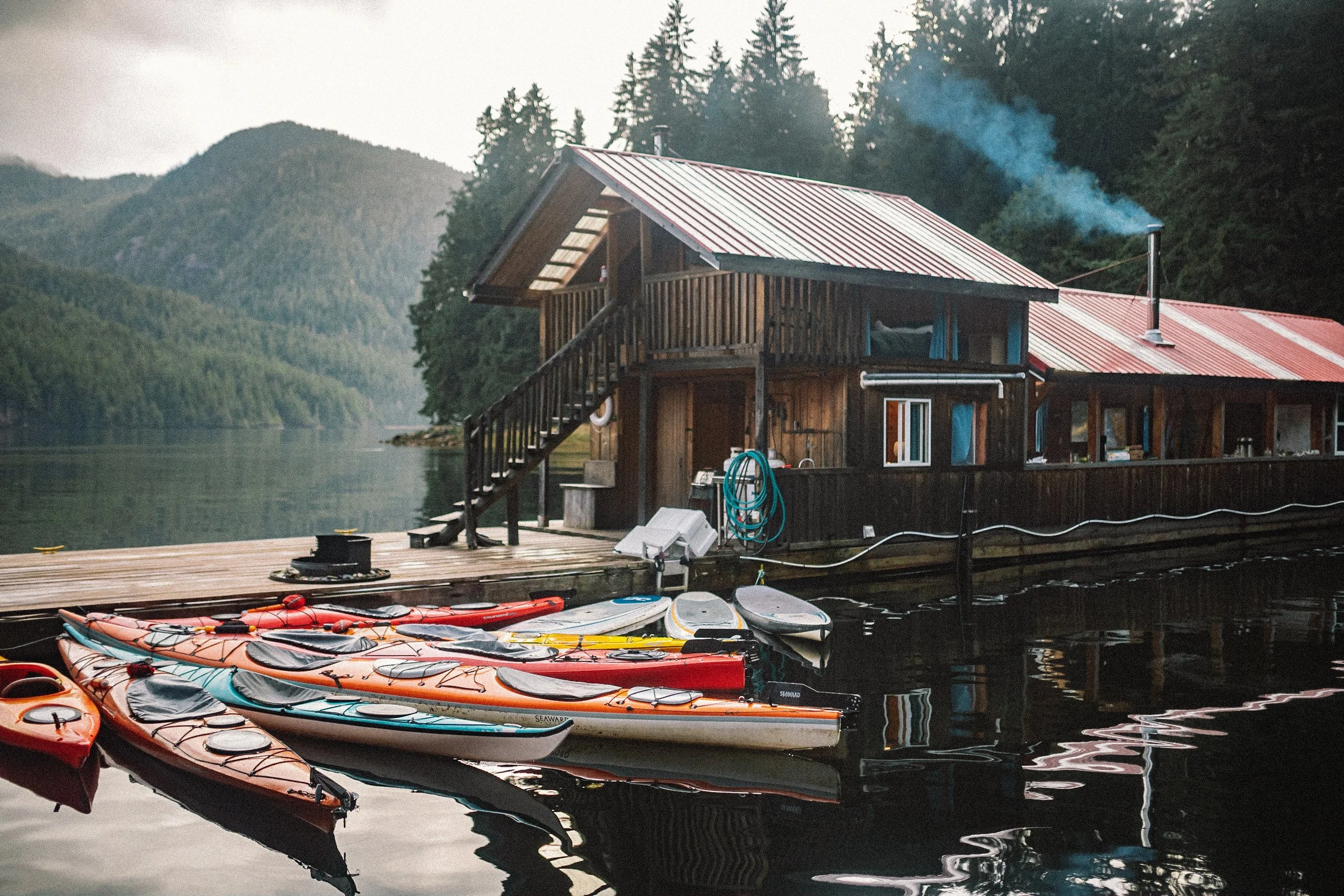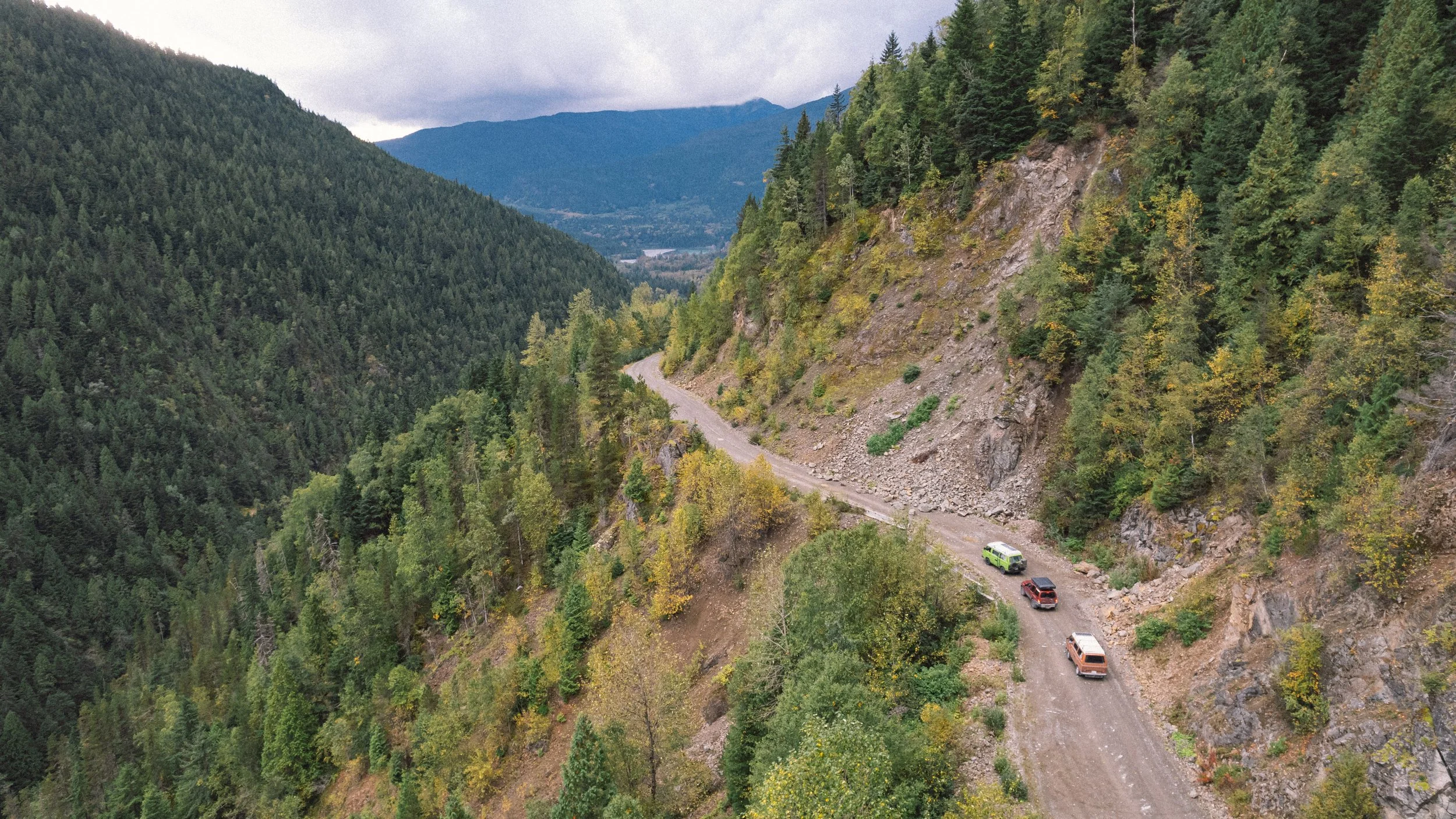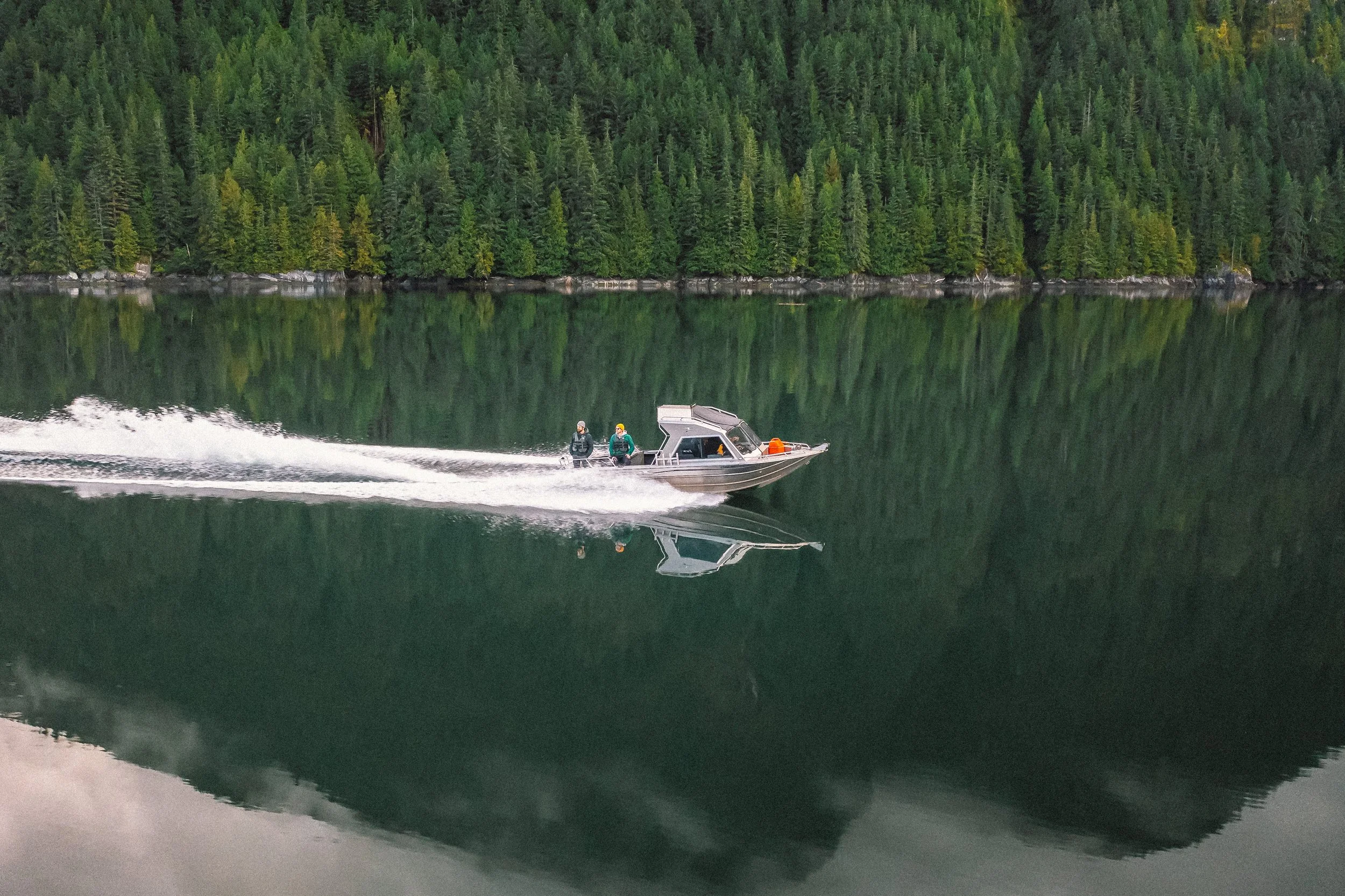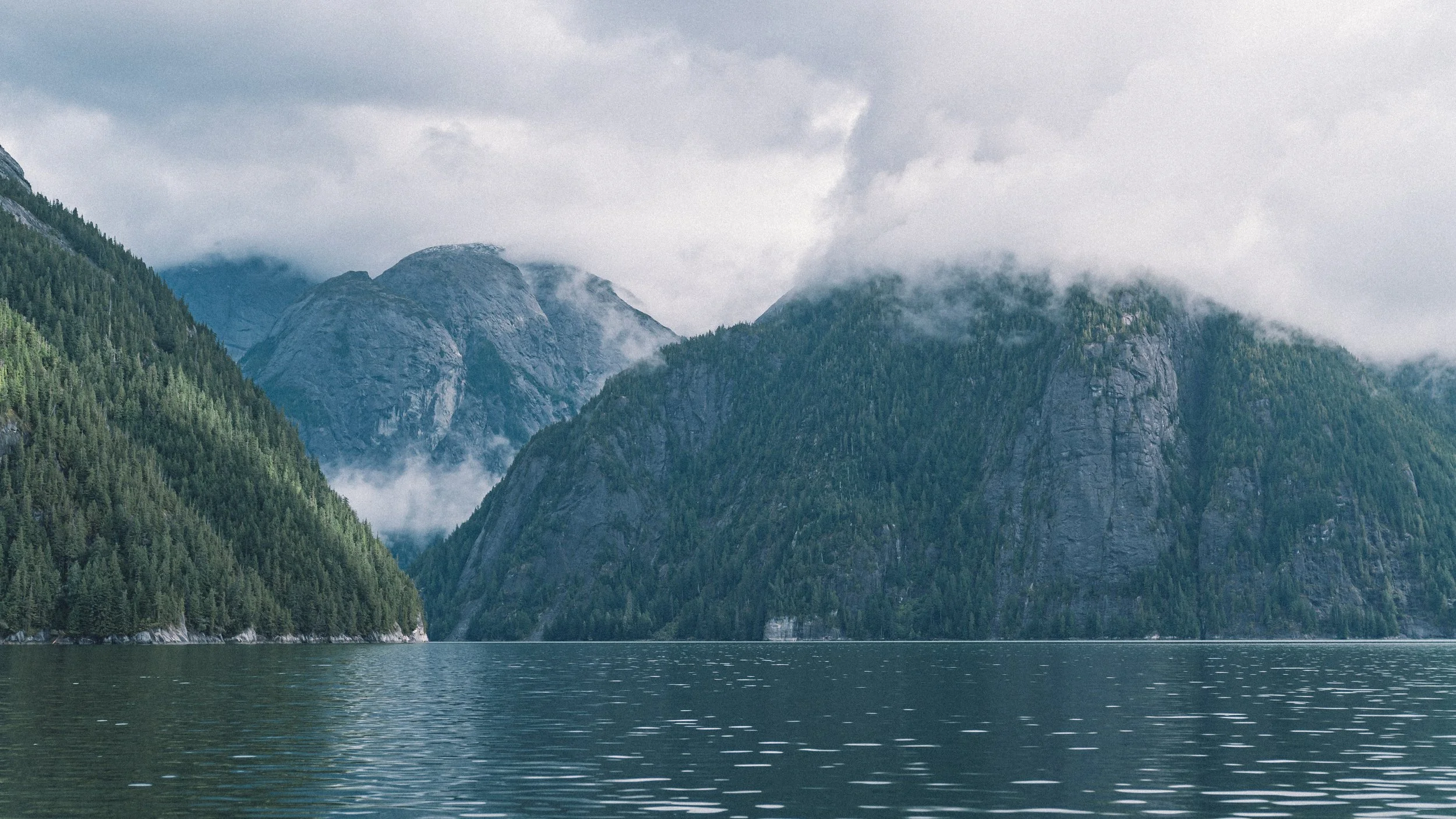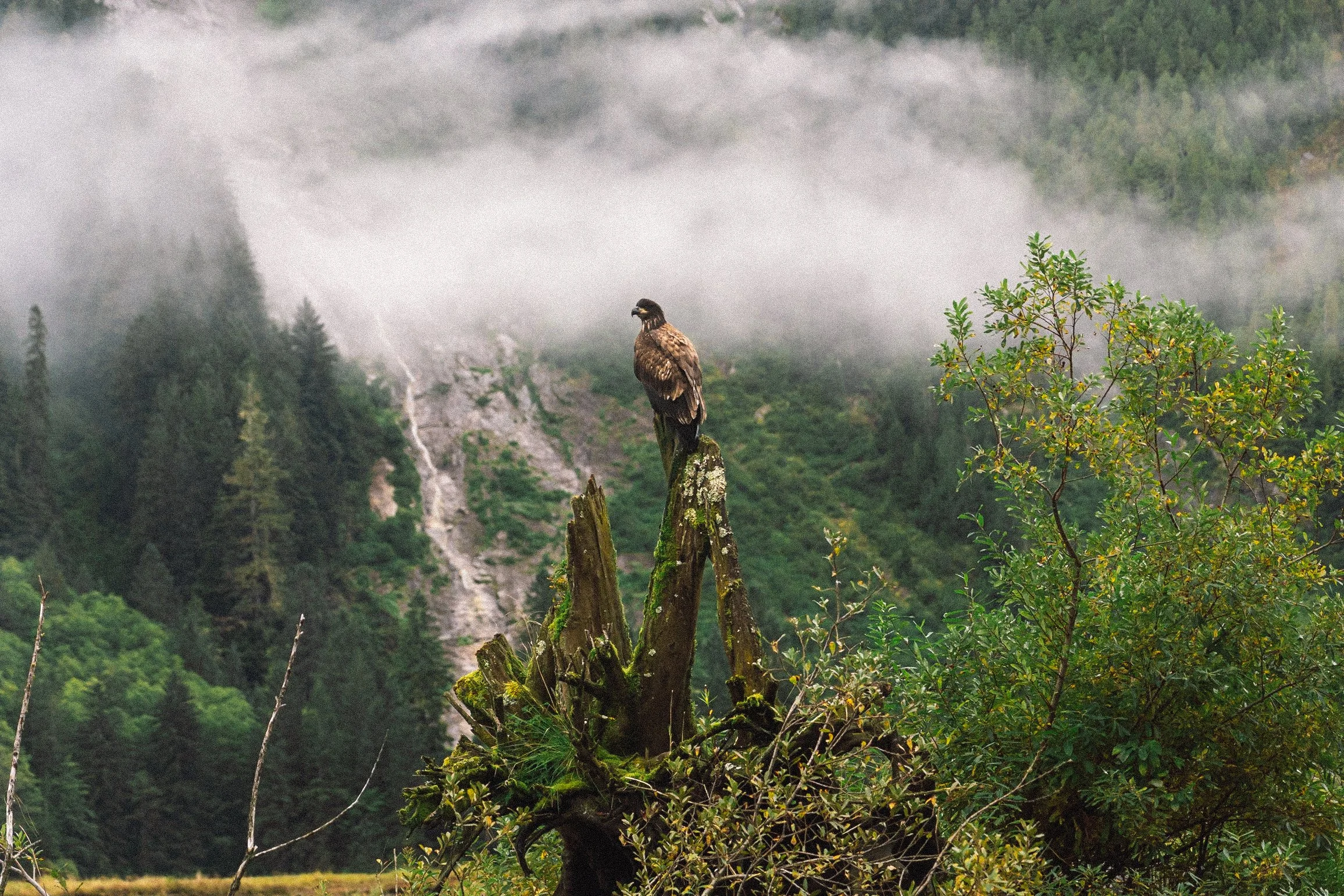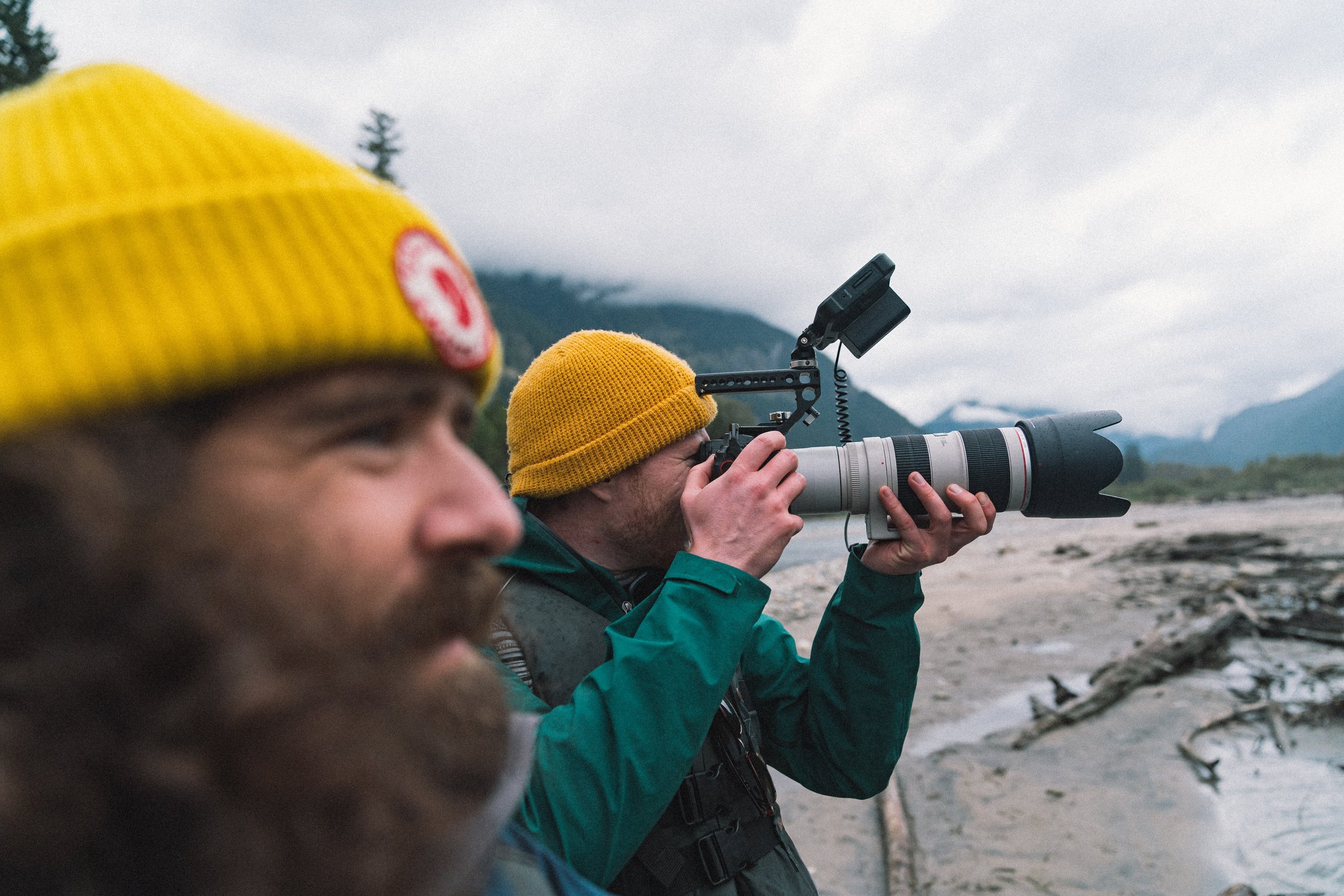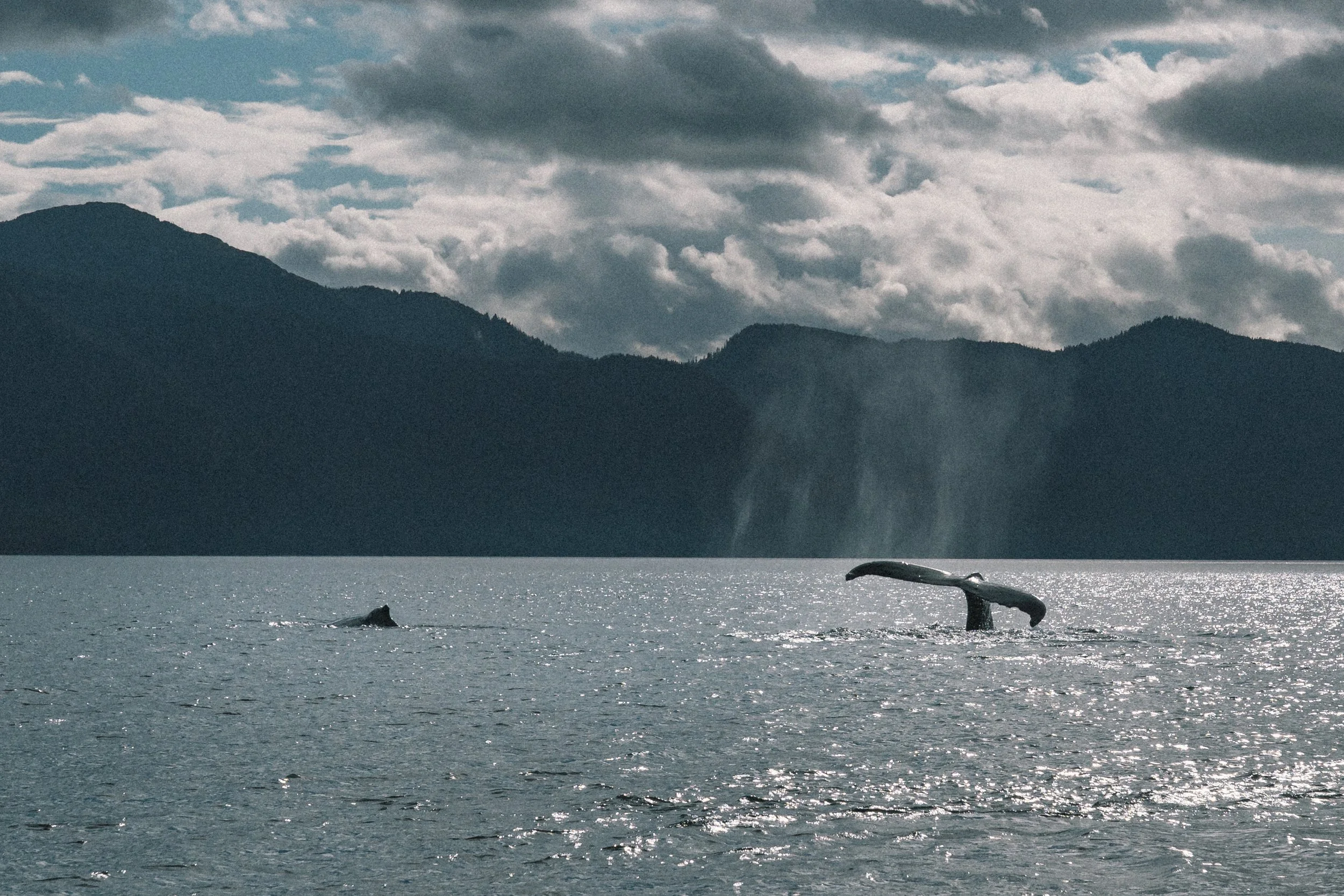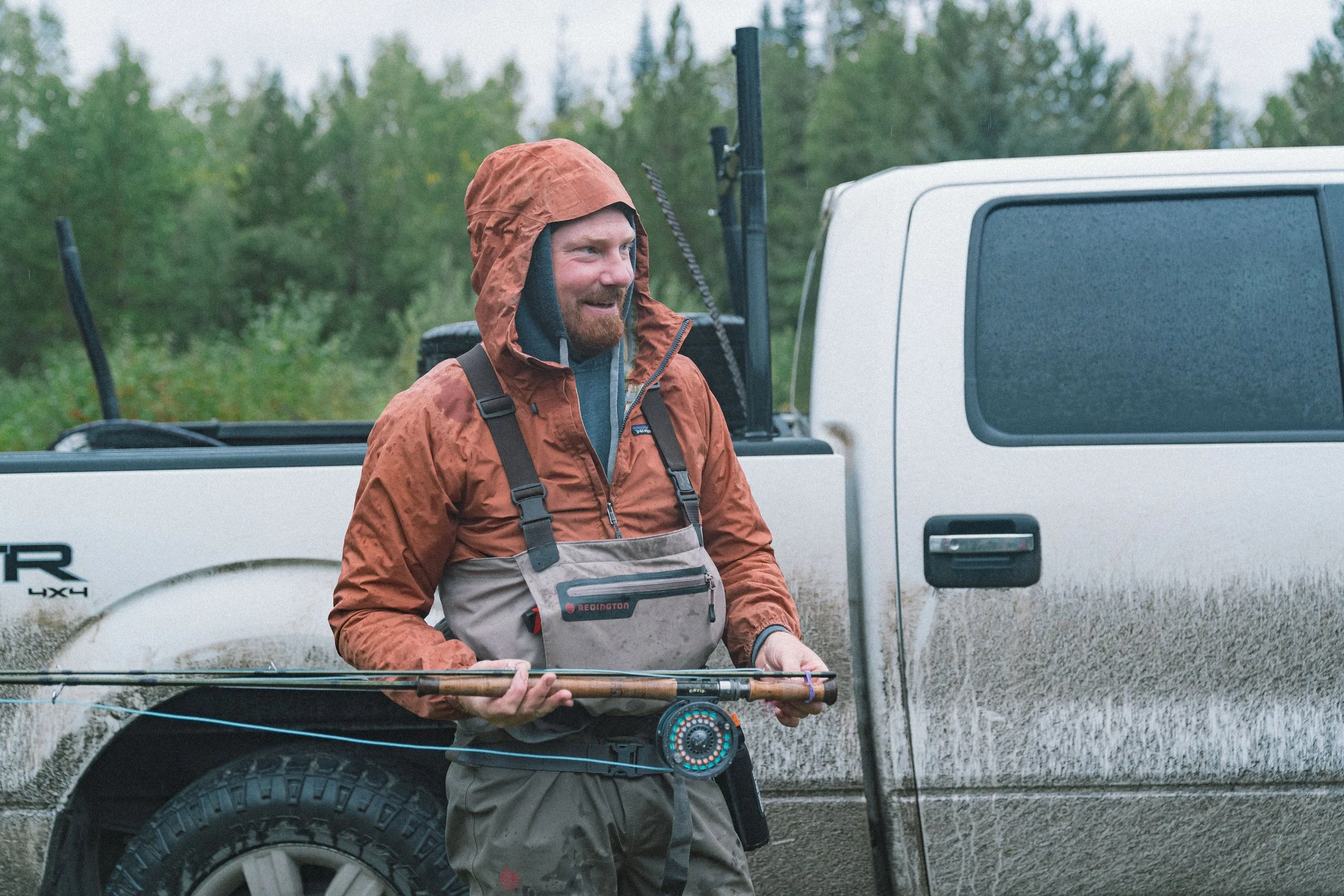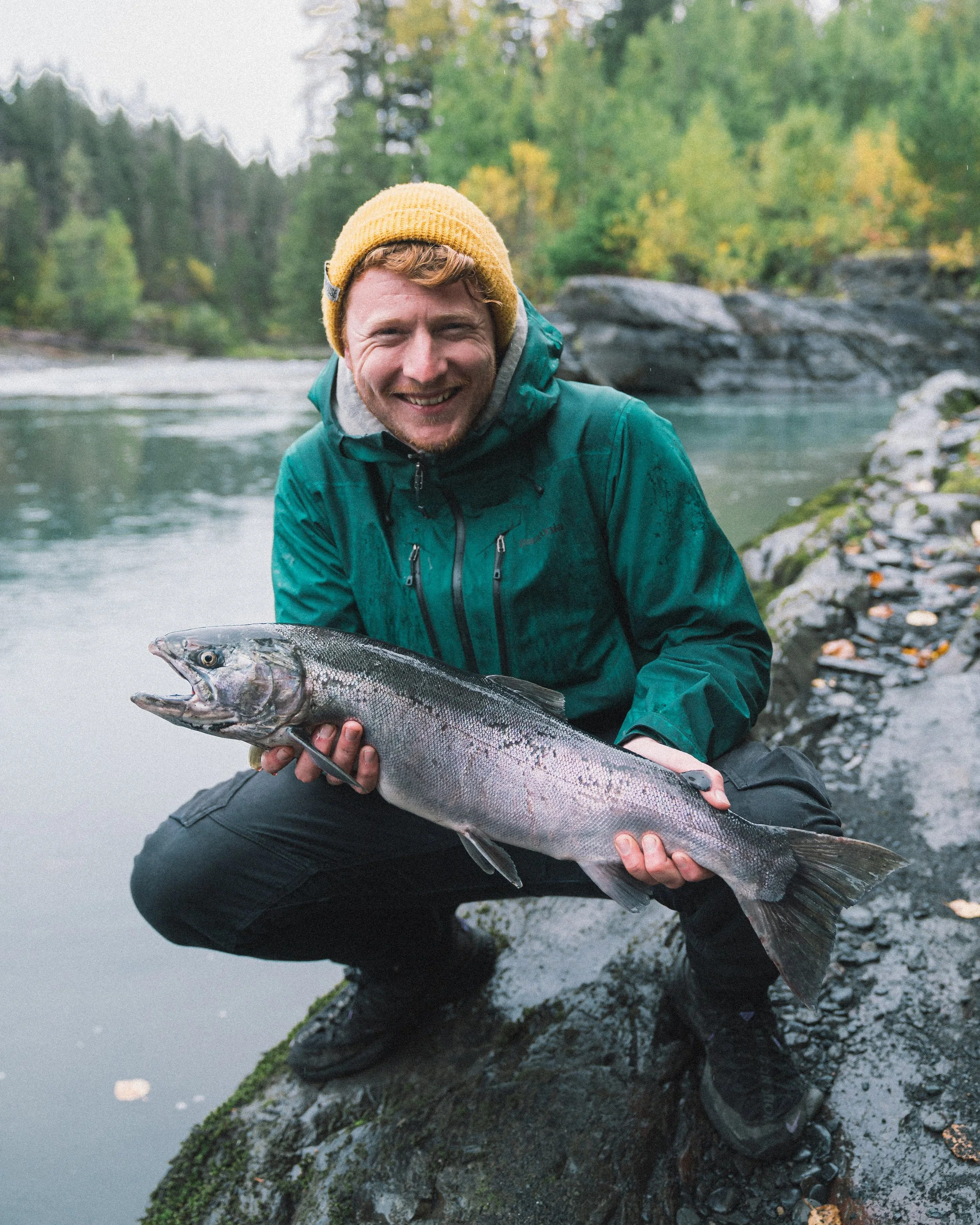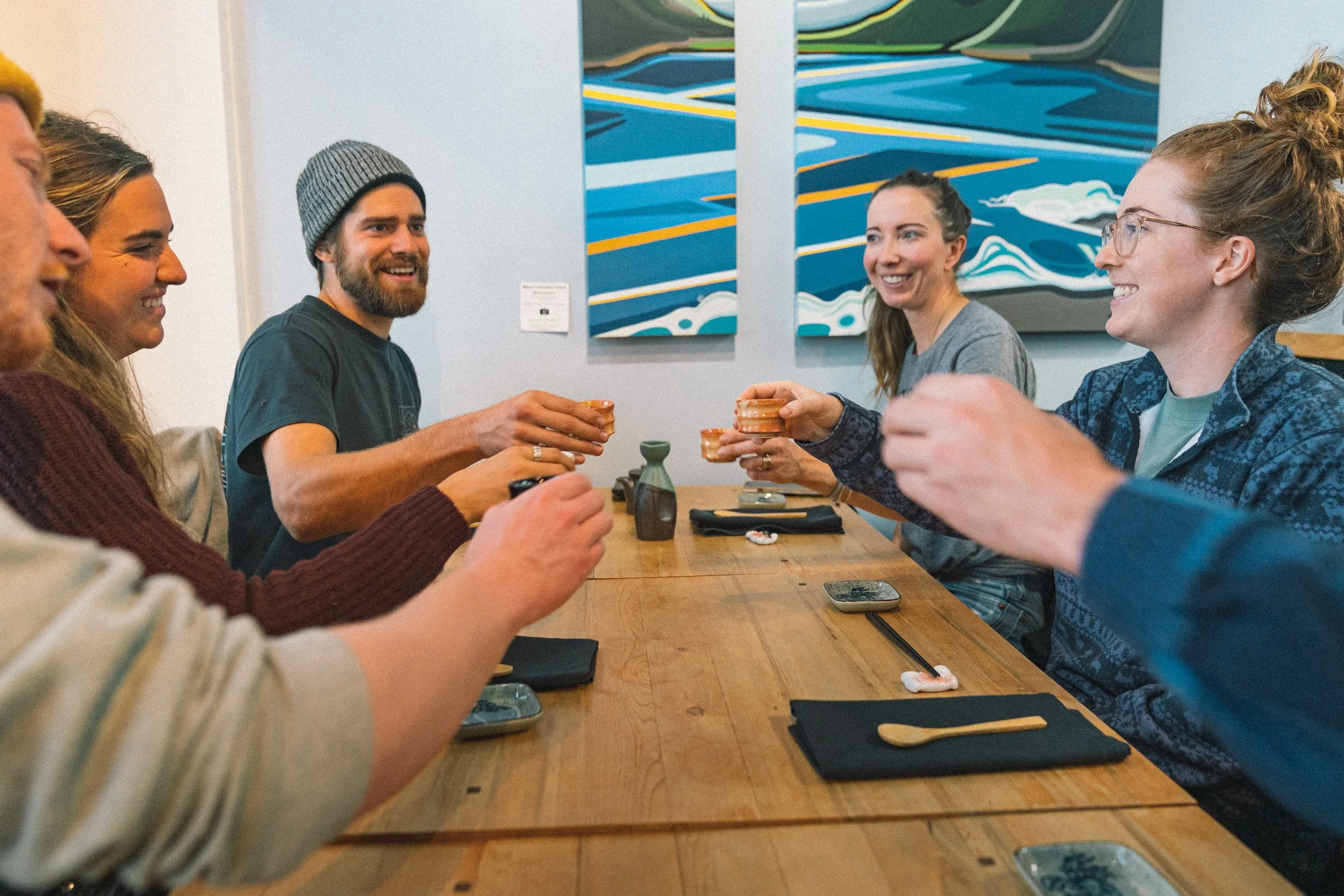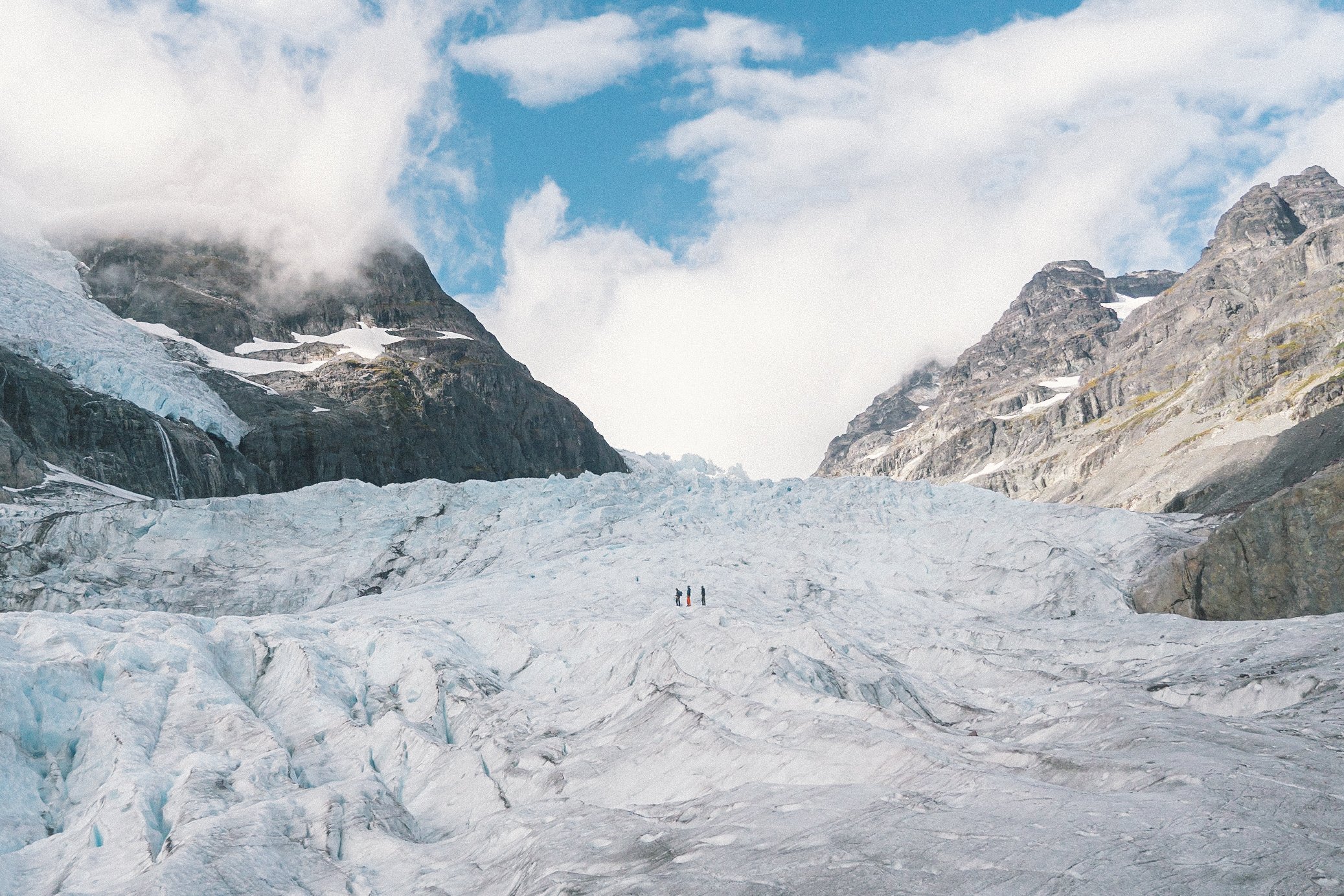Wake Up North
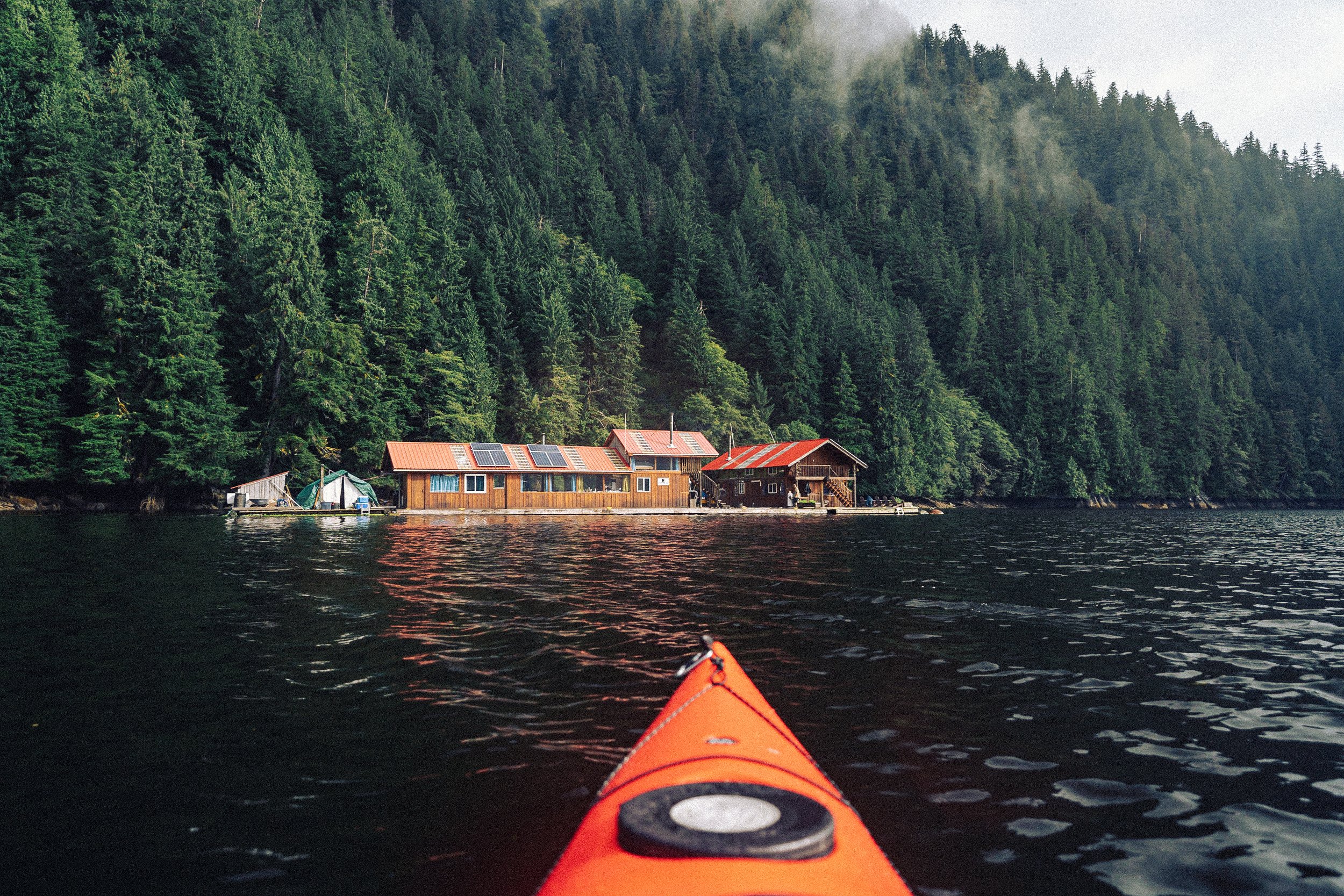
A road trip from Smithers, British Columbia to the Nass Valley, Kitimat and the Kemano River, Khutzeymateen Wilderness Lodge and The Great Bear Rain Forest, and Prince Rupert - Chapter 2 of Roam British Columbia: Smithers to Prince Rupert
by Josiah Roe with visuals by Joseph Gulizia, Sierra Rempel, and Viktoria North
I unzip the window of my roof-top tent and look out to see the sun rising over the tops of lodgepole pines on the far bank of the rapidly-flowing Bulkley River. The low-hanging clouds and early fall fog help diminish and diffuse the sun’s light, giving the campground - Riverside Park - a warm glow.
The indigenous inhabitants of the Bulkley River valley, the Wetʼsuwetʼen, originally called the river Wet'sinkwha, meaning “blue and green river”. European interest in the area was centered around logging, and when the Grand Truck Pacific Railway decided to build a divisional point here in 1913, they named it Smithers for their chairman of the board, Sir Alfred Waldron Smithers.
Now in our second week of our trip we have an established morning routine. First Victoria makes coffee, then Dan make’s sure devices are charging and the solar panels are angled correctly, and then Colton makes breakfast. Today our plan is explore the town of Smithers before pressing west and north into the mountains.
In the last decade Smithers has become famous for its diversity of world-class outdoor adventure activities, from steelhead fishing to skiing and mountain biking on the post-card perfect Hudson Bay Mountain. Its remoteness still helps it retain its charm, and we stop at Smithers Brewing for lunch and to say hi to Cam, the head brewer, and then we play paper-rock-scissors for who is the DD for the next leg of the trip.
Before leaving town we pickup our fishing licenses at Oscar’s Fly & Tackle Shop. Kerry is exceedingly helpful with some last minute lure purchases, and then we swing by Bugwood Coffee to pickup Victoria and Colton.
As we continue our drive west the mountains grow more rugged and the forest denser. Everywhere there is evidence of water and the vast Cordilleran Ice Sheet that once covered the land. Where Highway 16 meets the Cassiar-Stewart Highway we make an obligatory stop at the sign: “North to Alaska”.
It is 440 miles to the Yukon border, and 1000 to the Alaskan border.
We follow the Skeena River in a southwesterly direction. The Skeena is the second longest river in British Columbia and was an important transportation artery during the BC gold-rushes.
In Terrace we divide into two groups. Joe, Colton, Josh, and myself are heading south to Kitimat, and Sierra, Viktoria, and Dan are going to Prince Rupert.
In Prince Rupert Viktoria, Dan, and Sierra board a small float plane with Ocean Pacific Air. The plane heads north out over the Pacific Ocean following the coastline and its many fjords before entering the Portland Inlet.
The Kitimat Mountains are shrouded in clouds and fog, and the occasional break reveals glaciers, waterfalls, and down below enormous groups of logs floating in irregularly shaped rings, waiting to be loaded onto ships and sent south to paper mills and lumberyards. Soon the plane turns east-southeast into the Khutzeymateen Inlet, and as the inlet narrows we begin our gradual descent
As the plane lands the Khutzeymateen Lodge is revealed as a beautiful, floating structure, surrounded by the Khutzeymateen/K'tzim-A-Deen Grizzly Sanctuary wilderness, accessible only by air or water.
Socks and boots are placed by the fire to dry out, and Viktoria, Dan, and Sierra have snack and a tour of the lodge. The Lodge has two stories, a sauna, and a beautiful, full kitchen.
Viktoria sets out in a kayak to explore the area around the lodge. Soon she is joined by Dan, Sierra, and a guide, and they are able to paddle mere feet from the shore and its grizzlies, eagles, and waterfalls.
They return home to for lunch, a vegetarian salad with local chanterelles and vegetables grown in gardens at the lodge.
They don their cold-weather gear and set out in a skiff, deep into the inlet and up several small rivers. The bears are ever-present, mere feet from the them, and Viktoria laughs that the telephoto she borrowed from me was completely unnecessary.
The following morning devices are charged and a breakfast of pancakes, home fries, blueberries and strawberries are had as it rains lightly outside. Victoria is craving coffee from the aero press, and sets up her coffee station on the dock as eagles fish overhead. Dan and Sierra relax inside, reading about the conservation efforts of the park and the lodge.
Soon the plane returns. Theirs is the last group of the season, and the staff has begun the difficult work of packing up and breaking down everything in the lodge, which will then be towed back to its mooring for the winter. Goodbyes are exchanged, to each other and to the bears.
As Viktoria, Dan, and Sierra were exploring the Khutzeymateen, Colton, Joe, Josh and I were en route to Kitimat.
On the outskirts of Kitimat we take a right into Hirsch Creek Park and make camp. It’s dark and Joe needs to prepare the rig and housing for the shoot tomorrow, and I’m grateful we have the iF8R lantern, which is absurdly bright. Colton & Josh break out the cribbage board and our tournament continues.
The next morning we wake, make coffee, and head down to the marina to meet Rob of Northern BC Jet Boat Tours. An absolute encyclopedia of knowledge about Kitimat and Northern BC.
As we set out into the Kitimat Arm of the Douglas Channel, Colton & Joe take up station in the back of the jetboat as Rob explains to Josh that Rio Tinto is the primary driver of the local economy, known colloquially as Alcan ie. “Aluminum Company of Canada”.
Our destination is the Kemano River, where Alcan took on one of the most incredible engineering projects of the late 20th century to build the Kemano Generating Station to power its enormous aluminum smelter with hydroelectric power. You can read about it here.
As we turn out of the Douglas Channel and into the Gardner Canal we pass countless whales breaching and dolphins leaping high to play in our wake. Waterfalls hundreds of feet high cascade from hanging valleys down bright granite faces.
We enter the mouth of the river and we step into a wildlife festival. There are dozens and dozens of bears, a thousand eagles, and ten thousand salmon.
We find a place to stop to make lunch and I walk as quietly as I can about 30 yards away where I think I’ve seen a bear another 30 yards away feeding on shore. I stand up slowly and he’s looking directly at me.
As we make our way slowly back towards Kitimat we stop at the Brim River Hot Springs, which sits overlooking the Canal. Our only other companions are two whales playing off shore.
The next day we wake before sunrise and head north towards the Nass Valley, the heart and home of the Nisga'a people.
As we approach the valley from the south we pass a vast lava field, the site of the last major volcanic eruption in Canada, that looks as if the surface of the moon was capped with a mustard-colored fungus.
In the parking lot of the Lava Bed Campground we meet Jerry from Reel North Adventures. His love of the Nass Valley is infectious, and we load up into two vehicles and set out into the surrounding wilderness.
We follow Jerry down muddy and overgrown roads before parking and gathering all the gear we’d need for a day fishing the salmon run. He tells us not to worry about lunch, that he has it covered, and we set out into the forest on a barely recognizable use-trail.
Soon we can hear the sounds of the river and we walk out onto an embankment. It’s raining and cold. The leaves are changing to a bright yellow. We laugh.
For the next several hours we fish and hike, landing several enormous salmon. We hike upstream to a waterfall where the salmon must leap two meters into the air to make it upstream.
Jerry then tells us to follow us and we set out into the woods where in a matter of minutes we gather enough chanterelles to feed us for days.
We use the Soundboks as a table, and Jerry produces salt, pepper, pepper jack cheese, and crackers.
We feast.
Reunited as a group, we walk down 1st Avenue towards the waterfront, past marine supply stores, the Sunken Gardens, and Wheelhouse Brewing out onto the boardwalk overlooking the marina. Off-shore in the harbor, the deepest ice-free natural harbor in North America, grain barges pass fishing boats piled high with crab pots.
We open a nondescript door on a nondescript building. Inside is the nondescript interior of Fukasaku of Prince Rupert.
Behind the counter stands chef Dai Fukasaku. He smiles and nods, and gestures us to a long table that has been setup for our group.
Over the course of the next three hours Dai takes us on a journey through his favorite local, seasonally-available food. He tells us that everything was caught in the last few days and from nearby: “Except the avocados. But you must have avocados.”
At the end of the night I ask him why after all of his travels around the world he chose Prince Rupert. He pauses and says:
“I was sleeping, and then I wake up north.”









